Thinking about the Tandem t:slim X2 with Control-IQ, aka, Spider-Man?
“With great power comes great responsibility.”

Want to listen to the Podcast?
Episode 2: Mastering Control-IQ – The Spider-Man of AID We focus on the Tandem t:slim X2 with Control-IQ, a highly customisable system offering flexibility and control. We will cover how its algorithm works, key settings, and practical strategies to help you get the most out of it.
Things to look forward to:
- Highly customisable algorithm and having the potential of multiple insulin profiles for every kind of day
- Activity and Sleep modes to stay in target
- Having a high degree of flexibility
Here are the T-Slimx2 with Control-IQ essentials:
- How the algorithm works
- Starting settings
- Tips & tricks
- Preventing and treating hypos
- High-fat meals
- Exercise
How the algorithm works
The T-Slimx2 has three components:
- T-Slimx2 pump
- Dexcom G6, Dexcom G7 and Libre 2 Plus (depending on what part of the world)
- The algorithm inside the pump is called Control-IQ
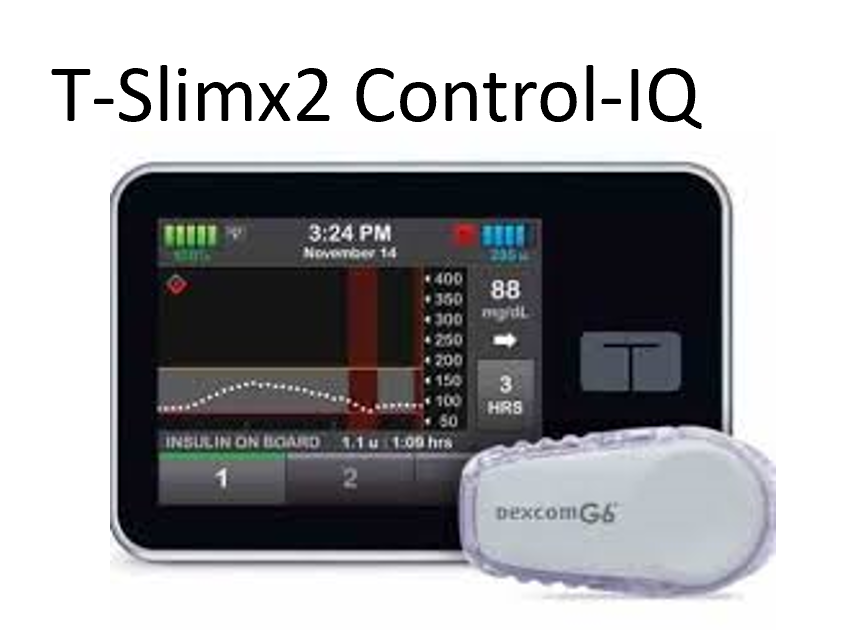
This graphic explains how Control-IQ works, in a nutshell.
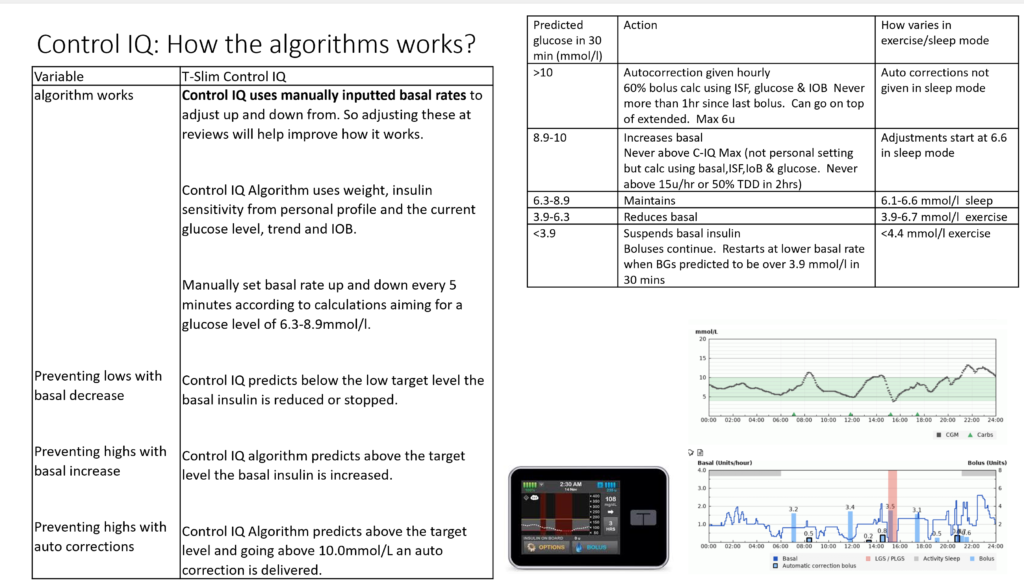
Take homes:
- The algorithm works from manually set basal rates and correction factors – both ultimate flexibility and responsibility.
- Basal increases when the glucose is rising but not over 10.0mmol/L (180mg/dL)
- Auto-correction bolus if the glucose is predicted to go above 10.0mmol/L (180mg/dL) (60% of correction required per hour)
- Basal decreases and suspends if the glucose is predicted to go low
- Control-IQ is targeting the glucose level to be between 6.3-8.9mmol/L (113-160mg/dL)
Starting settings
The Control-IQ algorithm calculates insulin adjustments from the manually set basal rates and correction factors. Therefore, it is advisable to have these settings somewhere close to what you need. Your team should be easily able to help with this and you can point your team to this AID Study Day that includes a calculator for supporting getting the settings right from the start.
Research shows the Correction Factor is the setting to adjust to change how aggressively the algorithm works without causing too many hypos.
Get time in range of at least 70% before creating a second profile. Then think about trying a second profile for weekends or other days if your insulin sensitivity is drastically different. This may not be needed and is NOT ESSENTIAL. As Francesca Annan (top-notch Diabetes Educator) says – FIND OUT BEFORE YOU FIDDLE
Starting an AID system can be divided into two parts.
First, SURVIVE,
Then, THRIVE.
You can download the How to Survive and Thrive Guide – (T-Slim x 2). There is also a more comprehensive onboarding resource if required (T-Slim x 2)
Tips & tricks
If you want to get 70% or more time in range do not forget the basics:
- Three balanced meals
- Accurate carb counting
- Bolus insulin 10-20 minutes before eating
- Be active for 10-15 minutes after eating
- Rotate cannula sites
Follow the above and you will have: 99 Problems But Highs Aint One (click if you want to download it, use it, share it!)
Other things to be aware of:
- Always suspend the pump when disconnecting (showers, sports, sex)
- Set the sleep schedule during usual sleep times so the algorithm targets waking up at 6.1mmol/L (110mg/dL)
- Focus on Correction Factor changes to optimise the algorithm
- Update basal rates, correction factors, and carb ratios when insulin sensitivity changes:
- Weight loss
- New exercise regime
- Every three months as a child or young person (every time you go to clinic)
Preventing and treating hypos
It would be awesome if hypos were a thing of the past. But this will not be the case.
The algorithm will be able to stop hypos overnight!
However, if you give too much bolus insulin for a meal or exercise without planning, hypos will still happen.
You will likely need less hypo treatment than normal because the algorithm will have already slowed or stopped the insulin at least 30 minutes prior.
You may also want to prevent hypos if you see the glucose is 4.0-6.0mmol/L (70-110mg/dL) and trending down.
This is a guide I use based on weight. This example is for a 30kg person and the weight can be changed. If you download the Survive and Thrive Guide – (T-Slim x 2) and enter your weight at the top, you will have your own!
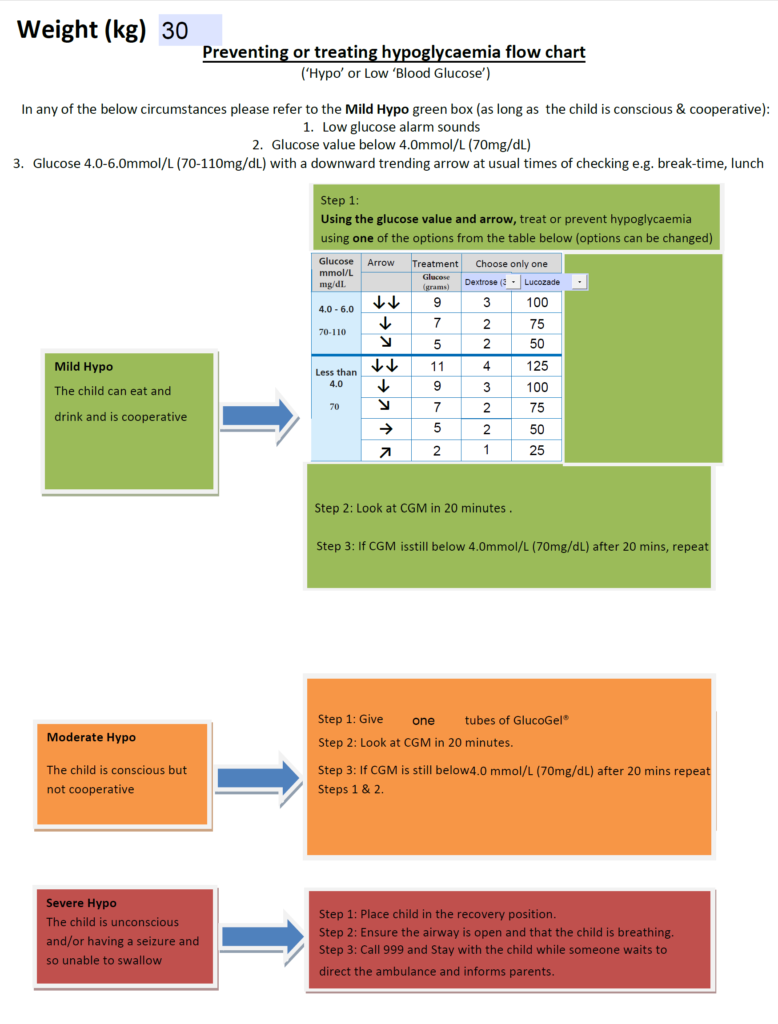
If you want this hypo guide, download it here.
High-fat meals
The Mealtime Insulin Guide explains that high-fat meals with carbs, such as pizza and takeaways, require additional insulin. Unfortunately, Control-IQ’s Active insulin time fixed at 5 hours poses a real problem here. The algorithm thinks that there’s too much insulin on board and is very sluggish at responding to the delayed rise in glucose from high-fat meals.
Control-IQ cannot keep up with high-fat meals with lots of carbs. I have experienced this several times and seen it countless times in others.
One solution is to increase the carbs entered by 25-50% and use an extended wave for 50% now and 50% over 2 hours.
For example, for a 100g carbohydrate pizza, dial in 125g and set an extended wave of 50% now and 50% over 2 hours. If the delayed glucose rise still happens, enter 150g (50% extra) next time.
A process of trial and error is required.
Exercise
There is the quick and dirty way and the more comprehensive planned method.
The quick and dirty method
This involves putting on the Activity mode before starting the exercise, ideally 90 minutes before. Then supplement with small amounts of carbohydrates every 20 minutes as required.
Do not shovel loads of carbs in at once as the glucose might shoot high and the algorithm will increase the insulin and hypo risk.
You can use a sneaky tip to prevent this!
If you give a 0.1 unit manual bolus just before starting the exercise, Control-IQ will not be able to put an auto-correction bolus in for the next 60 minutes!
How many carbs every 20 minutes?
Good question.
It depends on how much you weigh. Here is an example for a 50kg person. If you download the Survive and Thrive Guide – (T-Slim x 2) and enter your weight at the top, you will have your own!
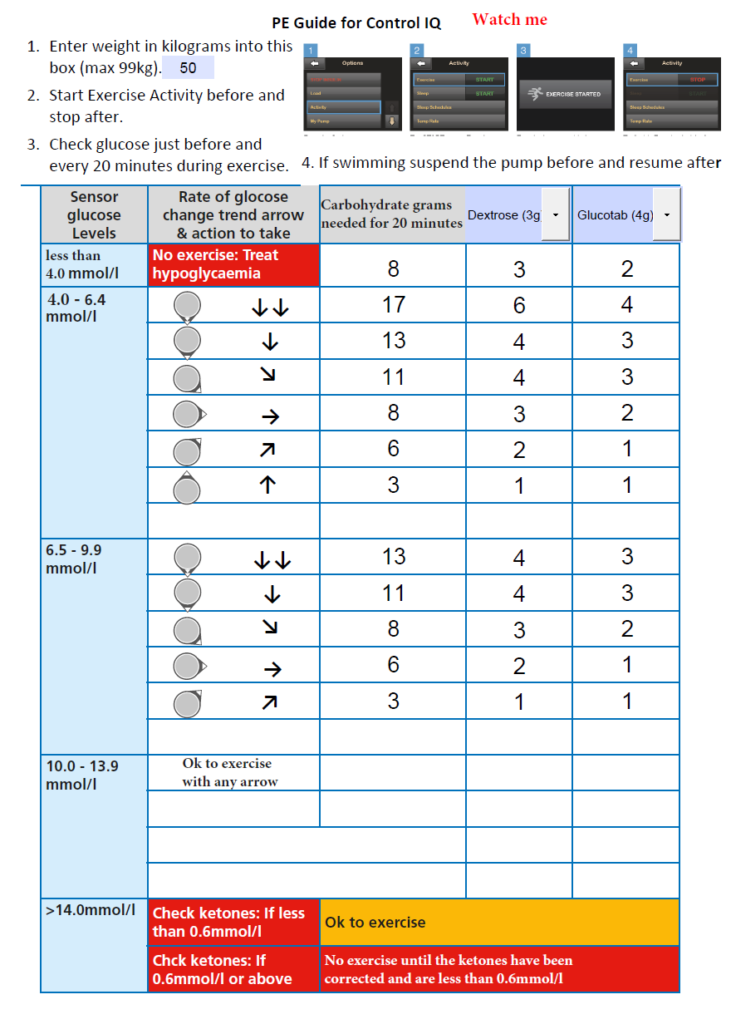
You can download the mmol/L and mg/dL versions if you want to try?
Comprehensive planned method
To be able to use this method you will need to work your way through the Exercise Guide. You need to understand exercise types, bolus reductions, and how to change a plan after a trial.
Read it?
Great, you are up to speed with exercise management.
This T25/T25 table should now make complete sense! If not read, the article on the recent AID and Exercise Consensus guideline, you will also notice the specific infographic below the simple T25/T25 grid.
This downloadable exercise tool for the Control IQ makes creating and adapting exercise plans easy!
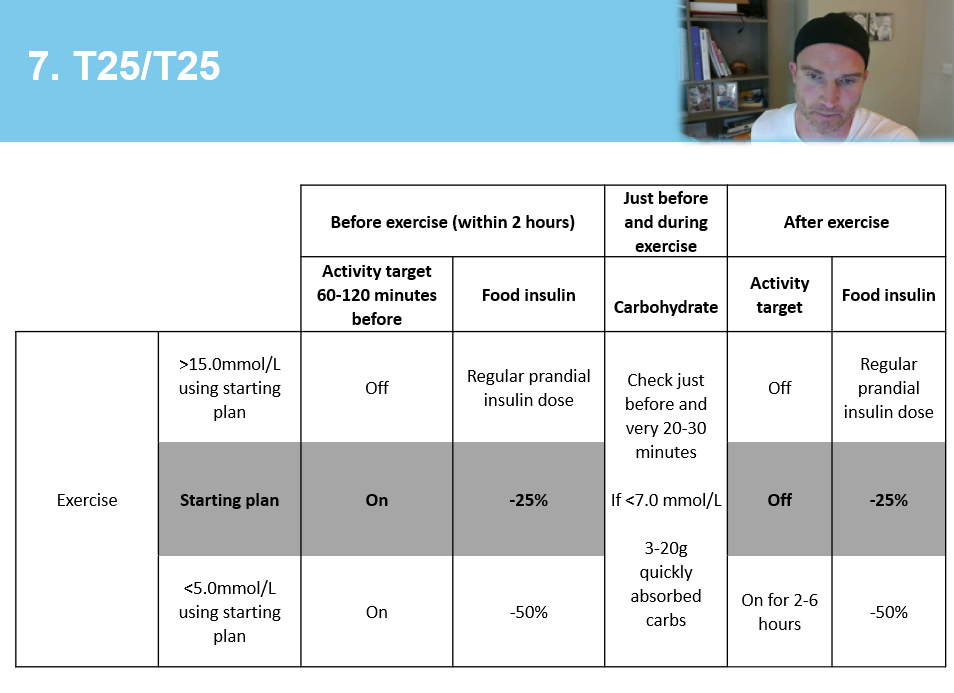
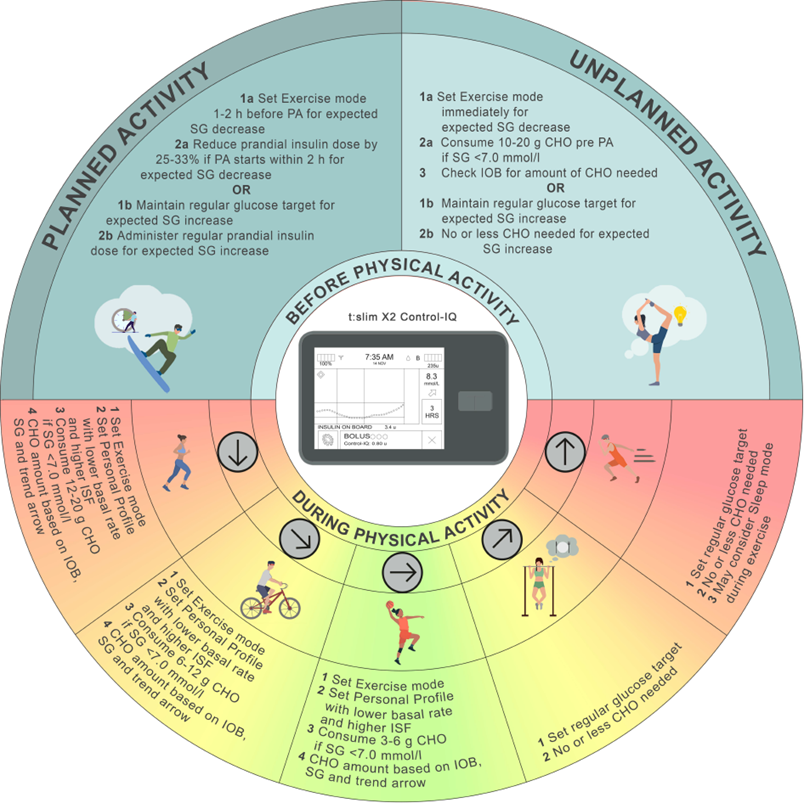
Go forth and conquer Control-IQ.
